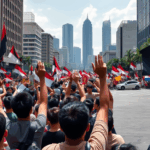Table of Contents
Understanding congestion pricing
Congestion pricing has become a hot topic in New York City, especially with President Trump’s recent announcement to eliminate this controversial tolling system. The idea behind congestion pricing is to charge drivers a fee for entering high-traffic areas, aiming to reduce congestion and fund public transit improvements.
However, this initiative has faced significant backlash from various groups, particularly those concerned about its impact on low-income drivers who rely on their vehicles for work.
Public opinion on Trump’s decision
Many New Yorkers are divided on Trump’s stance against congestion pricing.
Supporters argue that the toll is a financial burden on working-class citizens, while opponents believe it is a necessary measure to alleviate traffic woes and improve the city’s public transportation system. Critics of the congestion pricing plan, like Richard Rafal from Manhattan, claim that traffic has worsened in areas affected by the toll, suggesting that the initiative is not achieving its intended goals.
This sentiment is echoed by others who feel that the toll disproportionately affects those who cannot afford to pay extra fees.
The future of New York’s transit funding
With Trump’s administration potentially halting congestion pricing, the question arises: how will New York fund its transit system? Many argue that the Metropolitan Transportation Authority (MTA) must collect fares effectively from all riders to ensure stable funding.
The current fare evasion issue, which costs the city millions annually, is a significant concern. Advocates for reform suggest that before any federal funding is allocated, the MTA should demonstrate its ability to collect fares from every rider. This could lead to a more equitable transit system that serves all New Yorkers, regardless of income.
Addressing the concerns of low-income drivers
While the debate continues, it is crucial to address the concerns of low-income drivers who may be adversely affected by congestion pricing. Solutions could include exemptions or discounts for those who need to drive for work.
As Mary Bisgrove from Manhattan points out, funding should prioritize essential services like public transportation over entertainment projects, such as sports stadiums. Balancing the needs of all citizens is vital for a fair and effective transit system.
Conclusion
As the conversation around congestion pricing evolves, it is clear that New Yorkers are passionate about their transit system and its funding. Whether Trump’s opposition will lead to a permanent halt of congestion pricing remains to be seen, but the implications for the city’s traffic and public transportation are significant. Engaging in this dialogue is essential for finding solutions that work for everyone.





